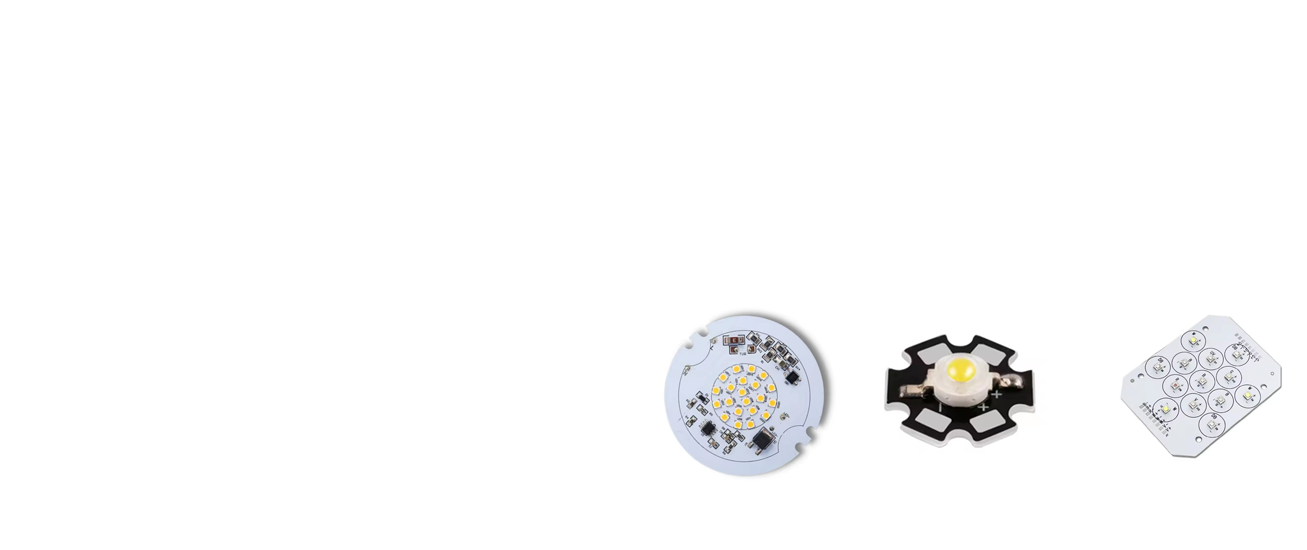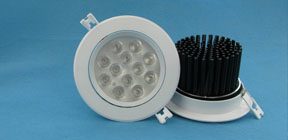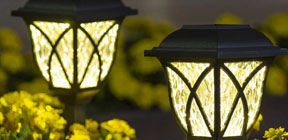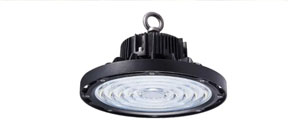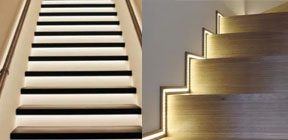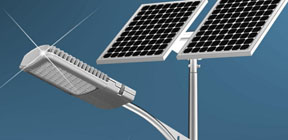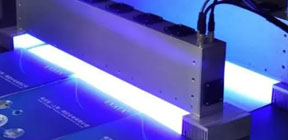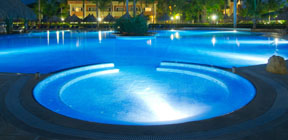In today’s fast-growing electronics industry, LED (light-emitting diode) technology has become a game-changer in lighting and display applications. LED PCB (printed circuit board) is essential for effectively powering and controlling LEDs. It plays a key role in ensuring the efficiency, lifespan and performance of LED lighting systems.
As the demand for energy-efficient lighting solutions continues to increase, understanding the complexity of LED light PCB design has become critical for engineers, designers and manufacturers. These circuit boards require special manufacturing steps in addition to design guidelines.
What is led light circuit board?
LED light circuit board is the abbreviation of printed circuit board, which is mainly used to carry and connect electronic components of LED lamps. LED light circuit board is usually made of aluminum substrate and FR-4 fiberglass circuit board, where the LED aluminum substrate is printed on the aluminum plane with good thermal conductivity, and then the electronic components are soldered on it. This design helps to improve the heat dissipation performance and stability of LED lamps, and ensure that the LED lamps can work stably for a long time.

The main function of LED light circuit board is to provide power to LED lamp beads and control the brightness and color of its LED lamp beads. In order to light up the LED lamp beads, an LED driving circuit is required, which includes constant voltage driving, constant current driving, PWM driving and other methods, which are usually integrated on the small circuit board of the LED lamp.
In addition, the design and manufacture of the LED lamp circuit board take into account the characteristics of LED, such as long life, high light efficiency, no radiation and low power consumption. Compared with traditional light sources, such as incandescent lamps and fluorescent lamps, LED lamps have significant advantages in efficiency, life and environmental protection.
How to make led light circuit board?
The process of making LED lamp circuit boards involves multiple steps, including welding, self-inspection, mutual inspection, cleaning, friction, wiring, etc.
Determine the direction of the lamp: the front side is facing up, and the side with the black rectangle is the negative end.
Determine the direction of the circuit board: the front side is facing up, and the end with two internal and external wiring ports is the upper left corner.
Welding: Carefully weld each solder joint to ensure fullness, cleanness, and no false soldering or leaking.

Self-inspection: After completing the welding, first check whether there is a cold solder joint, leaking solder joint, etc. Use a multimeter to touch the positive and negative terminals of the circuit board to check whether the LED lights are on at the same time.
Mutual inspection: After the self-inspection, it will be handed over to the person in charge for inspection. Only with the consent of the person in charge can it flow into the next process.
Cleaning: Use 95% alcohol to scrub the circuit board to remove residues and keep the circuit board clean.
Friction: Use fine sandpaper (coarse sandpaper if necessary) to grind off the burrs on the edge of the circuit board so that the circuit board can be placed flatly in the fixing seat.
Wiring: Use blue and black thin wires to connect the circuit board. The wiring point close to the inner circle is negative and connected to the black wire; the wiring point close to the outer circle is positive and connected to the red wire. Make sure the wires are connected from the back to the front.
Self-check and mutual check: Check the wiring to ensure that each wire passes through the pad, the length of the wires on both sides of the pad that remain on the surface should be as short as possible, and the thin wires will not break or loosen when gently pulled.
Through the above operations, the production of the LED lamp circuit board can be completed. Each step is crucial, especially the welding and wiring parts. It is necessary to ensure the quality of the welding points and the correct connection of the wires to ensure the normal operation of the circuit board and the normal lighting of the LED lamp.
Why do you need a resistor with an LED?
When using LED, a resistor needs to be connected in series to control the current, prevent excessive current from damaging the LED, and ensure that the LED can emit light normally.
LED is a semiconductor device that can directly convert electrical energy into light energy. Due to its special material properties, LED is very sensitive to current, and excessive or insufficient current may cause the LED to malfunction or be damaged.
Therefore, when the LED is connected to the power supply, a resistor is needed to limit the current to ensure that the LED can work stably and safely.
The main function of this resistor is voltage division and current limiting. It is used to adjust the current passing through the LED to prevent the LED from burning out due to excessive current, while also ensuring that the LED can emit light of appropriate brightness.
Specifically, when current passes through the LED, the resistor will produce a certain voltage drop, thereby reducing the voltage applied to both ends of the LED, thereby controlling the current passing through the LED.
What resistor to use with LED?
Use an LED resistor calculator to help determine the required resistor value.
When using LEDs, in order to protect the LED and ensure its normal operation, it is usually necessary to limit the current by connecting an appropriate resistor in series. This is because each LED has a maximum current value, exceeding which may cause the LED to be damaged.
Using an LED resistor calculator can help you determine the required resistor value to ensure that the current does not exceed the maximum tolerance of the LED.
By entering the relevant parameters of the LED (such as the rated current and voltage), the calculator will automatically calculate the required resistor value to protect the LED from overcurrent damage.
This method is a common practice and is applicable to any situation where a number of LEDs are used in series. In this way, the safe operation of the LED can be ensured while avoiding damage caused by excessive current.
How to improve the heat dissipation performance of LED light circuit boards?
The key to improving the heat dissipation performance of LED light circuit boards is to optimize the heat dissipation path, use efficient heat dissipation materials, and adopt advanced heat dissipation technology.
Optimize the heat dissipation path:
Understanding the heat transfer path of the heat generated by LED components is the first step to improve heat dissipation performance. Heat moves from the LED components through the package wires to the circuit board, and then dissipates through the heat sink.
The heat dissipation efficiency can be effectively improved by using materials with good thermal conductivity, expanding the cross-sectional area of the path (such as using thick copper wire), and applying thermal lubricants to reduce the gaps in the connection parts.
Use efficient heat dissipation materials:
Metals such as copper and aluminum are often used to make heat sinks because of their good thermal conductivity. In addition, new materials such as graphene are also used to make heat sinks because of their excellent thermal conductivity. These materials can significantly improve heat dissipation efficiency.
Adopting advanced heat dissipation technology:
Micro-groove group composite phase change integrated cooling technology is an advanced heat dissipation technology. It effectively removes the heat of high-power electronic devices by changing the closed-circulation cooling medium into a nano-scale water film and utilizing its strong evaporation ability and latent heat exchange ability.
As an excellent thermal conductive medium, thermal conductive silicone grease has excellent electrical insulation and thermal conductivity. It can penetrate into the tiny depressions on the metal surface, increase the contact area, and improve the efficiency of heat conduction from the LED chip to the aluminum substrate.
Are LED PCBs only used in lighting systems?
The application range of LED PCB (printed circuit board) is far more than lighting systems. In addition to lighting systems, LED PCB is also widely used in other fields. For example, LED lamps are one of the most common products using LED PCBs. Whether it is home lighting, commercial lighting or outdoor lighting, LED lamps occupy a large market share.
Compared with traditional incandescent lamps and energy-saving lamps, LED lamps have higher luminous efficiency, longer service life and lower energy consumption. They also have features such as dimming and color change, which can meet the needs of different scenarios.
In addition, LED PCB is also used in LED display screens, LED backlight sources and automotive lighting. LED display screens provide high-definition and high-brightness display effects in large-scale events such as sports events, concerts, and exhibitions, bringing a shocking visual experience to the audience.
LED backlight sources have become the mainstream choice in electronic products such as LCD monitors, mobile phones, and tablet computers. Compared with traditional cold cathode fluorescent lamps, LED backlight sources have higher brightness, longer service life and lower energy consumption. At the same time, they can achieve local dimming, improve display effects and reduce energy consumption.

In the field of automotive lighting, with the advancement of automotive lighting technology, more and more cars are beginning to use LED lamps. Compared with traditional halogen and xenon lamps, LED car lights have higher brightness, longer service life, lower energy consumption, faster response speed and better heat dissipation performance, which improves driving safety.
From this we can know that the application of LED PCB is not limited to lighting systems, but is widely used in many fields, including but not limited to lighting, display technology, backlight sources of electronic products, and automotive lighting.
Conclusion:
Designing PCB for LED lights is a complex but critical task that requires careful consideration of various influencing factors, from the selection of manufacturing materials to the testing of thermal conductivity and the quality testing of finished products. Choosing Best Technology has expert design assistance and reliable manufacturing processes, which will allow you to obtain the best results for LED light PCB design.

